How To Lie With Car Statistics

Car sales in India powered ahead in January. India added 184,332 passenger cars to its roads, up 26.3 percent. According to the Hindustan Times, this was “the highest ever in a month eclipsing the previous record set only three months ago.” Allow me to use this opportunity for a small lecture on the use and abuse of auto industry statistics, in Asia, and around the world.
Whenever you see a sales number reported, make sure that you know what it is about. Have a look at this graph, also from the Hindustan Times. It looks spiffy. But it is an egregious example of what can go wrong.
The headline says: “ With 13.2 lakh vehicles, domestic auto sales were 19% up.” God help us.
First of, what is a lakh? As India gets important, it will be a term we will see often, so we better familiarize us with it. A lakh in India is 100,000.
Now 13.2 lakh vehicles would be 1.32 million. Did India buy 1.32 million autos in January? No way. India bought some 184,000 cars in January, and 1.32 million vehicles. How’s that? The Indians insist on counting three and two-wheelers as motor vehicles. This confuses everybody.
Here at TTAC, we try to follow the OICA model and count the total of “cars” and “commercial vehicles”.
OICA defines a motor vehicle as something that has ”at least four wheels, used for the transport of passengers, and comprising no more than eight seats in addition to the driver’s seat.” OICA and we add “commercial vehicles” to that count, because there is no clear worldwide definition of when a truck is “commercial” and when not. If we would eliminate all the “trucks” from the U.S. count for instance, America would end up having half the cars it has. (Trust me, there are statistics out there that say just that.)
If you check the graph, you see:
184,332 passenger cars, up 26.28 percent
That would amount, if there is no double counting, to 479,079 units as per our and OICA’s definition sold in January in India.
But there is double counting: According to the Indian industry association SIAM, “passenger vehicles” are the total of passenger cars, utility vehicles and multi-purpose vehicles (i.e. cars, SUVs and MPVs). Therefore, the actual total is 294,747. Phew!
When you read sentences like “Two-wheeler sales, which constitute almost 75 percent of total automobile sales in the country…” then it’s time to pause and to check a little more.
You think that’s just an Indian confusion? Be prepared to be surprised. Confusion reigns all over the world, and on this side of the pond as well.
The official 2010 sales number for China, according to the China’s Association of Automobile Manufacturers (CAAM) is 18,061,900. This is the total of all motor vehicles according to OICA, no two- or three-wheelers included.
Many media outlets, such as the Detroit News, insist that “About 13.8 million vehicles were sold in 2010 in China compared with 11.6 million in the United States.” They didn’t say “cars”. They said “vehicles.” Not even motor vehicles. Sorry, wrong number. Nevertheless, that erroneous number is making the rounds.
There were 13.76 million “passenger cars” sold in China plus more than 4 million so called “commercial vehicles”. The total of motor vehicles sold was 18,061,900.
Also, since we are nitpicking, the size of the automotive industry of a country is (as per OICA) measured by production, not by sales. That can have dramatic impact for countries such as Japan, Korea, or Germany which have a high rate of export.
In China, the impact of exports is negligible. Here is the official word on the topic, straight from China’s CAAM:
“From January to December this year, China automobile production reached 18,264,700 units, an increase of 32.44% compared with the same period of last year; Production of passenger cars was 13,897,100 units, up 33.83 percent year on year; the output of commercial vehicle was 4,367,600 units, increased by 28.19% compared with the same period of last year.”
Let’s recap:
Be sure what you count: Cars? Trucks? Motorcycles? Trikes? The worldwide accepted benchmark used for the ranking of manufacturers and countries is all motor vehicles with 4 wheels or more that don’t run on rails.
Are you counting sales or production? Both have their place, but they need to be kept apart. The worldwide accepted benchmark used for the ranking of manufacturers and countries is production.
When you really want to know, go straight to the source. Numbers are misreported at an alarming rate.
Class dismissed!

Bertel Schmitt comes back to journalism after taking a 35 year break in advertising and marketing. He ran and owned advertising agencies in Duesseldorf, Germany, and New York City. Volkswagen A.G. was Bertel's most important corporate account. Schmitt's advertising and marketing career touched many corners of the industry with a special focus on automotive products and services. Since 2004, he lives in Japan and China with his wife <a href="http://www.tomokoandbertel.com"> Tomoko </a>. Bertel Schmitt is a founding board member of the <a href="http://www.offshoresuperseries.com"> Offshore Super Series </a>, an American offshore powerboat racing organization. He is co-owner of the racing team Typhoon.
More by Bertel Schmitt
Latest Car Reviews
Read moreLatest Product Reviews
Read moreRecent Comments
- Pig_Iron This message is for Matthew Guy. I just want to say thank you for the photo article titled Tailgate Party: Ford Talks Truck Innovations. It was really interesting. I did not see on the home page and almost would have missed it. I think it should be posted like Corey's Cadillac series. 🙂
- Analoggrotto Hyundai GDI engines do not require such pathetic bandaids.
- Slavuta They rounded the back, which I don't like. And inside I don't like oval shapes
- Analoggrotto Great Value Seventy : The best vehicle in it's class has just taken an incremental quantum leap towards cosmic perfection. Just like it's great forebear, the Pony Coupe of 1979 which invented the sportscar wedge shape and was copied by the Mercedes C111, this Genesis was copied by Lexus back in 1998 for the RX, and again by BMW in the year of 1999 for the X5, remember the M Class from the Jurassic Park movie? Well it too is a copy of some Hyundai luxury vehicles. But here today you can see that the de facto #1 luxury SUV in the industry remains at the top, the envy of every drawing board, and pentagon data analyst as a pure statement of the finest automotive design. Come on down to your local Genesis dealership today and experience acronymic affluence like never before.
- SCE to AUX Figure 160 miles EPA if it came here, minus the usual deductions.It would be a dud in the US market.

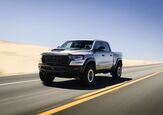


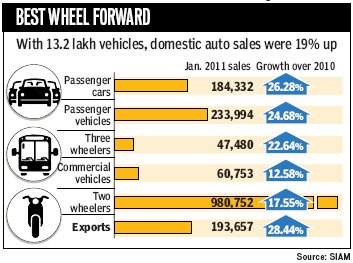

















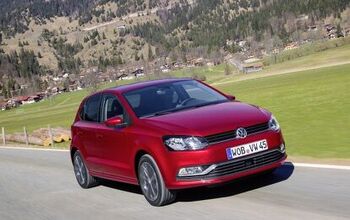
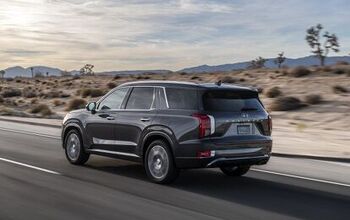







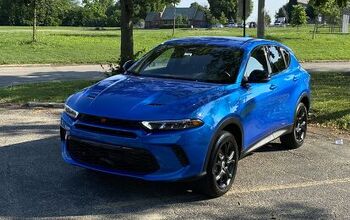



Comments
Join the conversation
As Mark Twain said: "there are only 3 kinds of lies -- Lies, damned lies, and statistics"
As Mark Twain said: “there are only 3 kinds of lies – Lies, damned lies, and statistics” Never mind statistics--- the most blatant lies are those of omission. For example, look no further than the dealer lots for most manufacturers in any city in North America. Most dealer advertising on the vehicles closest to the street read to the effect of low monthly payments (or lately, WEEKLY payments, in order to show a lower price figure up front, hoping the gullible peasants won't notice), but neglect to mention that said payments drag on for upwards of six years(!) and that they do not include taxes, dealer prep, freight, "admin" fees or whatever else the dealer can dream up to tack onto the back end. Some have even been known to sweeten the deal by showing an even lower payment--- but neglect to tell the unwary customer that to do this the paperwork, with deft sleight-of-hand, now reads "LEASE" rather than "purchase." Just once I'd like to see the out-the-door price advertised on a new car at a dealership. No games, no B.S., No "gotchas." Too bad this won't happen without legislation...